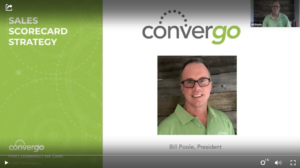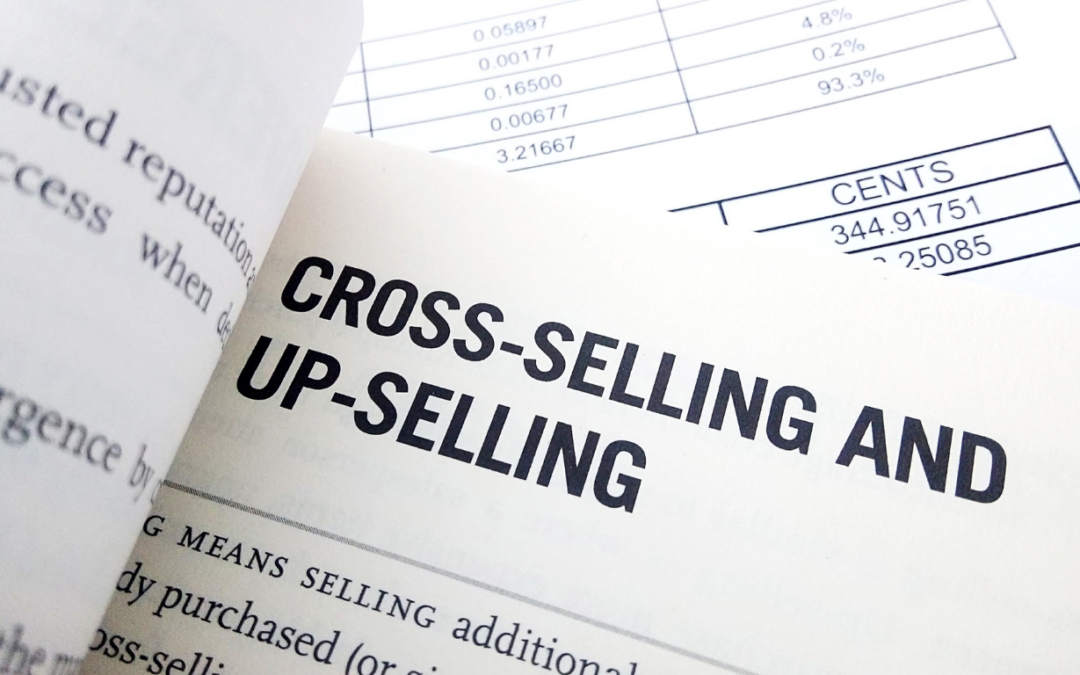
by Bill Poole | Aug 22, 2023 | Sales
Not all that long ago, the decision to implement a CRM involved huge trade-offs. A CRM that was very functional from a sales standpoint had very limited functionality for the operations/customer service team. Customer service applications lacked sales functionality. Marketing automation applications were stand-alone and did not inherently integrate with the CRM.
There will always be trade-offs when making decisions, but CRMs have significantly evolved to enable functionality for the whole organization. As you might imagine, the benefits for each department are different.
Let’s dig into each department and look at some of the benefits that modern CRM offers today’s business.
Sales
The CRM benefits for sales make it a lot easier to convince the sales team to make a CRM change than it used to be!
- Improved win/lead conversion rates – That’s the big idea, right?
- Team productivity – Automation like templated content enables you to make more touches in less time while controlling the message.
- Accurate Forecasting – When configured and used correctly, forecasting is simple!
- Rep Development- Reporting of the right metrics helps leaders take the right actions to develop individual reps.
Marketing
There was a time when marketing folks used to buy their own technology. Those days are gone:
- Improved lead flow – Segmentation allows you to hone and improve your message, and downstream, closed-loop reporting helps marketers know which tactics and messages are turning prospects into clients.
- ROI – Closed-loop reporting enables attribution to help with this age-old challenge
- Share of wallet – Marketing has always marketed to prospects. Managing clients in the same system allows you to market to your clients as well.
Client Success
Stand-alone client/customer success teams limited the visibility of the sales and marketing touchpoints of the prospect journey. No longer!:
- Customer/Client Sat – Having a 360-degree view of the client puts actionable insight in front of your Customer Success team.
- Productivity – Enhanced communication channels and built-in automation enable you to meet customers where they are and provide the correct response.
Admin/Finance
Integration and inherent back office functionality have recently brought admin and finance to the CRM party. How do they stand to gain?
- Billing/payment integrations and streamlined processes – Many CRMs go beyond the proposal and integrate contracting into the CRM.
- Billing accuracy – Automation reduces errors!
- View of history – Visibility marketing, sales, and client success interactions help support your AR team.
IT
Not only do IT teams support CRMs they also provide functionality to them.
- Departmental productivity/costs – Most CRMs reduce administrative reliance. Much of the admin is enabled at the departmental level by the users that know what they need, reducing the burden on IT.
- Security – New CRMs need to provide levels of security that were not previously imagined in old CRMs.
- Integration – New CRMs need less integration because of their Improved functionality. When integration is needed, new CRMs provide a lot more flexibility.
- Mobile enablement – Today’s mobile workforce enables IT to give users the access that they need on the go.
Leadership
A fully functional CRM is a huge asset from a strategic perspective:
- Business planning – When the CRM is humming, it is much easier to gauge future performance and to support strategic decision making.
- Cross-functional Alignment – When departments use different applications, there is less of a need to be aligned. However, that also increased the need for someone to pull everything together. A fully functional CRM promotes cross-functional alignment.
Conclusion
The evolution of CRMs has been a massive enabler to the success of a business that properly takes advantage of the opportunity. That said, the decision for the right CRM is more complex.
Ensuring that all departments are engaged when shaping your CRM requirements is imperative. When done correctly, implementing the right CRM can be a substantial competitive advantage, improving communications, streamlining processes, enabling data-driven decision-making, and enhancing customer experiences.
Continue to read more about CRMS:
Make sure to download your “5 Steps for Scaling Sales and Growing Revenue” ebook.
#ModernCRM #EmpowerYourOrganization #DriveSuccess #DataDrivenDecisions #StreamlineProcesses #CrossDepartmentalEngagement #Convergo

by Bill Poole | Aug 22, 2023 | Sales
Unlocking Growth for Entrepreneurial Businesses by Overcoming Sales Barriers
Sales is a barrier to growth for a lot of entrepreneurial businesses. Understanding how to break through that barrier can be very challenging. How can you do it? Some common thoughts that go through your mind might be:
- Do I have the right people in place?
- Are we taking the right approach?
- Do I need to document my processes?
- Do I need to improve my scorecard?
Many of these things can be helpful, but acting on these questions may lead you down the wrong road because you may not be addressing the root cause of the problem. Many times, the challenges are more foundational.
Three questions you should ask yourself before acting on one of those questions are:
- Do I clearly understand my ideal client and the outcomes they want from their business?
- Are my uniques/differentiators/value proposition aligned with the outcomes that my ideal clients want?
- Is the path to realizing our value clear for my ideal clients?
Let’s explore these questions in more depth so that you can have a better understanding of what the root cause of your challenge might be.
Do I have a clear understanding of what my Ideal Clients want?
If your ideal client profile is too broad, it can weaken your message and make it challenging to reach your entire market. Honing your Ideal Client Profile (ICP) has two huge benefits:
- It strengthens your message – a tighter ICP makes it easier to create a message that resonates.
- It allows you to be more effective with your limited sales and marketing budget – simply stated, investing the same amount on a smaller pool of more qualified prospects that your business is more optimized to serve yields better results.
Your ICP should include the high-level outcomes that Ideal Clients want from their business. This helps you align your offerings and also create messaging that hits the mark.
Are my differentiators/uniques aligned with the outcomes that my ideal clients want?
The ideal state is that you have some uniques or differentiators that directly align with your Ideal Clients’ desired outcomes. In its purest sense, if you uniquely position your services to satisfy your ideal clients’ desired outcomes, sales, and marketing can be like shooting fish in a barrel.
This is a lot harder in businesses that operate in a competitive market. The EOS™ 3 Uniques concept states that, while some companies might share a unique or two, the ideal state is that no other business offers all three.
If you are in a market that is challenging to differentiate, then clearly connecting your services to your Ideal Client’s desired outcomes might be the best thing you can do to differentiate.
Is the path to value clear for my ideal clients?
The path to value has a lot of interchangeable terms:
- Client Journey
- Proven Process in the EOS world
- Client Experience
Regardless of what you call it, the keys to leveraging the concept to win more are the same:
- Tightly integrate your uniques into the journey
- Make it clear how your Ideal Clients navigate their path to value
- Brand your Client Journey and use it as a tool to connect with your Ideal Clients
As Donald Miller says, “… if you confuse, you lose.” Clearly communicating your Ideal Client’s path to value will not only help you speak to prospects and clients, it will also help you align your team to deliver the journey that you desire.
Conclusion
This should help you better understand the root cause of your barrier to sales. If you are able to resolve these questions with good answers, then the next step is to look at your systems and people and build your growth assets.
Read more on how to identify your ideal client profile.
Make sure to download your “5 Steps for Scaling Sales and Growing Revenue” ebook.
#entrepreneurialbusiness #salesbarriers #idealclient

by Bill Poole | Aug 21, 2023 | Sales
Two Types of CRMs
There are two types of CRMs: vertical and horizontal.
Vertical CRMs are designed to meet specific industries’ unique needs and challenges. They provide more targeted solutions to businesses operating in those sectors, with features and functionalities tailored to their particular requirements. Examples of vertical CRMs include healthcare CRMs, real estate CRMs, and legal CRMs. These CRMs may also provide industry-specific integrations that streamline workflows and improve productivity. However, if all businesses are different, integrating and optimizing for your business may require more effort for a vertical CRM.
On the other hand, horizontal CRMs are designed to work across different industries, providing more functional and flexible solutions. They offer a more comprehensive range of features and functionalities that are more customizable to suit your business needs. Examples of horizontal CRMs include Salesforce, HubSpot, Monday.com, and Zoho. While they may not be ready to roll out of the box, horizontal CRMs provide more flexibility to customize and wrap around your unique business like a glove. Additionally, they may provide more visibility across your entire business.
Trade-offs
A lot of the decision process for a CRM comes down to trade-offs. When choosing between vertical and horizontal CRMs, consider your business goals, the size and complexity of your business, and the level of customization you require. You should also evaluate the CRMs compatibility with your existing tech stack, including marketing automation software, social media management tools, customer service software, and even back-office applications. Your new CRM may enable you to retire some of your outdated tech.
It is extremely important that all departments are involved in developing requirements for a new CRM as all stand to gain from a functionality perspective. After your requirements are defined, it is time to weigh the trade-offs. Consider cost, ease of use, and scalability when comparing your CRM options. Some CRM systems are a lot more expensive than others, so understanding the trade-offs can be very challenging.
Conclusion
In conclusion, there is a lot at stake, so ensure you look at the decision holistically before you decide on a horizontal or vertical CRM.
Read more on how CRMs can increase revenue here. Make sure to download your “5 Steps for Scaling Sales and Growing Revenue” ebook.
#CRMInsights #BusinessTech

by Bill Poole | Aug 9, 2023 | Resources, Sales
Creating a business plan (V/TO™) is a great first step in moving your business to your goals.
Putting in place the processes and metrics to enable you to meet those business goals is a journey, but it is a journey worth taking. We call this the “Connected Scorecard.” The connected scorecard tracks the right activity metrics to drive your desired lagging metrics (your desired results from your Business Plan/ V/TO). Tracking the right leading metrics between the two helps you know if you are getting there.
Once you have the right processes in place and track the right metrics, you know how to take the appropriate actions to move your business forward.
Check out the video on how to Connect Your Sales Scorecard to Your Business Plan.

Connect Your Sales Scorecard

by Bill Poole | Jul 14, 2023 | Sales
On the surface, investing in contact data looks expensive. Before you reject the idea, here are three reasons to consider investing in a product like ZoomInfo, and then we will look at a few considerations to help you evaluate whether or not it might be worth it for your business.
Add Value To Your CRM
Investing in contact data can help keep your CRM (Customer Relationship Management) system up to date by providing accurate and current information about businesses and professionals. Here are a couple of ways contact data can assist in keeping your CRM up to date:
- Data Enrichment: Enrich your existing CRM data by appending and updating company and contact details. Any effective sales and marketing strategy can benefit from accurate information such as company names, addresses, phone numbers, industry classification, employee count, revenue estimates, and executive contacts.
- Contact and Account Scoring: Scoring capabilities to assess the quality and relevance of leads, prospects, and clients within your CRM also adds value. Analyzing various data points, such as job titles, industry, company size, and technology usage, can help prioritize and segment your CRM data, ensuring you focus on the most valuable prospects and customers.
Know When Your Prospects Are Seeking Your Help
Intent data refers to information about a prospect’s online activities and behaviors, indicating their interest or intent to purchase. You can configure your application to tell you when contacts that meet your Ideal Client Profile are Googling for things you can help them with.
Target The Right Contacts
Nothing is more frustrating than investing your energy in pursuing a prospect that has moved on from their position. Even worse, having incorrect contact data for customers and clients affects retention, client satisfaction, and the productivity of sales, marketing, and operations.
Time To Reconsider?
Your people, technology, and processes are significant assets to your organization. Here are a few things to consider before you put the kibosh on investment in contact data:
- How much have you invested in your CRM and other technologies with contact data?
- How much more effective would your team be if you took away all of the time they spend on activities aimed at the wrong contacts?
- What is the lifetime value of an Ideal Client to your business?
If you weigh these considerations, investing in a product liKe ZoomInfo seems like a slam dunk!

by Bill Poole | Jun 5, 2023 | Sales
B2B services organizations typically have goals to grow their business. The interesting thing is that they often miss the biggest opportunity to grow that is right under their nose. It is pretty hard to argue that it is a lot easier ot sell to current clients than to new ones. Most quoted statistics reference that it is 10x more expensive to sell to a new client than en existing one.
Five benefits to focusing on cross-selling to your clients.
- Increased revenue: Cross-selling allows B2B organizations to generate additional revenue streams by selling complementary or related services to existing customers. By offering a broader range of services, organizations can tap into new revenue opportunities without incurring significant customer acquisition costs.
- Deepening customer relationships: Cross-selling services is an effective strategy for strengthening relationships with existing customers. By expanding the range of services provided to a customer, B2B organizations deepen their engagement and become more embedded in the customer’s operations. This increases customer loyalty and reduces the likelihood of them seeking alternatives from competitors.
- Competitive advantage: Cross-selling can provide a competitive advantage by differentiating the B2B organization from its competitors. Offering a comprehensive suite of services that addresses a customer’s diverse needs can make the organization more appealing and valuable to customers. It positions the organization as a one-stop solution provider, giving them an edge over competitors who may offer a more limited range of services.
- Cost savings: Cross-selling to existing customers is generally more cost-effective than acquiring new customers. The B2B organization already has an established relationship with the customer, reducing the need for extensive marketing efforts and associated costs. Additionally, existing customers are more likely to be receptive to cross-selling efforts as they already trust the organization and value the existing services provided.
- Market expansion: Cross-selling services can open doors to new markets or customer segments. By identifying additional services that cater to different industries or sectors, B2B organizations can enter new markets with existing customers. This diversification reduces dependence on a single market segment and helps mitigate risks associated with market fluctuations.
Maximize Your Efforts
To maximize the effectiveness of cross-selling services, B2B organizations should focus on understanding their customer’s needs, developing a comprehensive service portfolio, training sales teams to identify cross-selling opportunities, and maintaining strong customer relationships through ongoing communication and support.
Download Your Cross-Selling Potential Questionnaire







